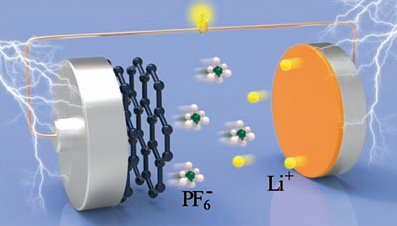Dual-ion intercalation alloying process probably won’t roll musically off the tongue, but the process has made a test cell that has greater specific density and energy density than the batteries in Teslas. Or the Chinese BYD electric sedan, according to its makers. It’s “environmentally friendly” and low cost, to add to its sales appeal. Yongbin Tang and his colleagues at Shenzhen Institutes of Advanced Technology of the Chinese Academy of Sciences (CAS) have created an aluminum-graphite dual-ion battery (AGDIB) that, “Compared with conventional LIBs, …shows an advantage in production cost (~ 50% lower), specific density (~1.3-2.0 times), and energy density (~1.6-2.8 times).” The team claims their battery can reach a volume energy density of the AGDIB ~560 Wh/L, “considerably higher” than Tesla’s Model S Panasonic batteries (~350 Wh/L) or the BYD E6’s LiFePO4 lithium iron phosphate cells (~200 Wh/L). The team further claims their battery outperforms electrochemical capacitors. After 200 charge-discharge cycles, the battery has a reversible capacity of ~100 …
Tag Archive
Below you'll find a list of all posts that have been tagged as “Chun-Sing Lee.”

